It’s striking when you begin to notice it: professionally designed gardens, especially naturalistic ones, use little mulch.
Trained horticulturists know that the secret to glorious, imaginative plantings with a full look and interest throughout the seasons depends on closely grown plants in relationship with each other, not separate specimens isolated in seas of bark mulch.
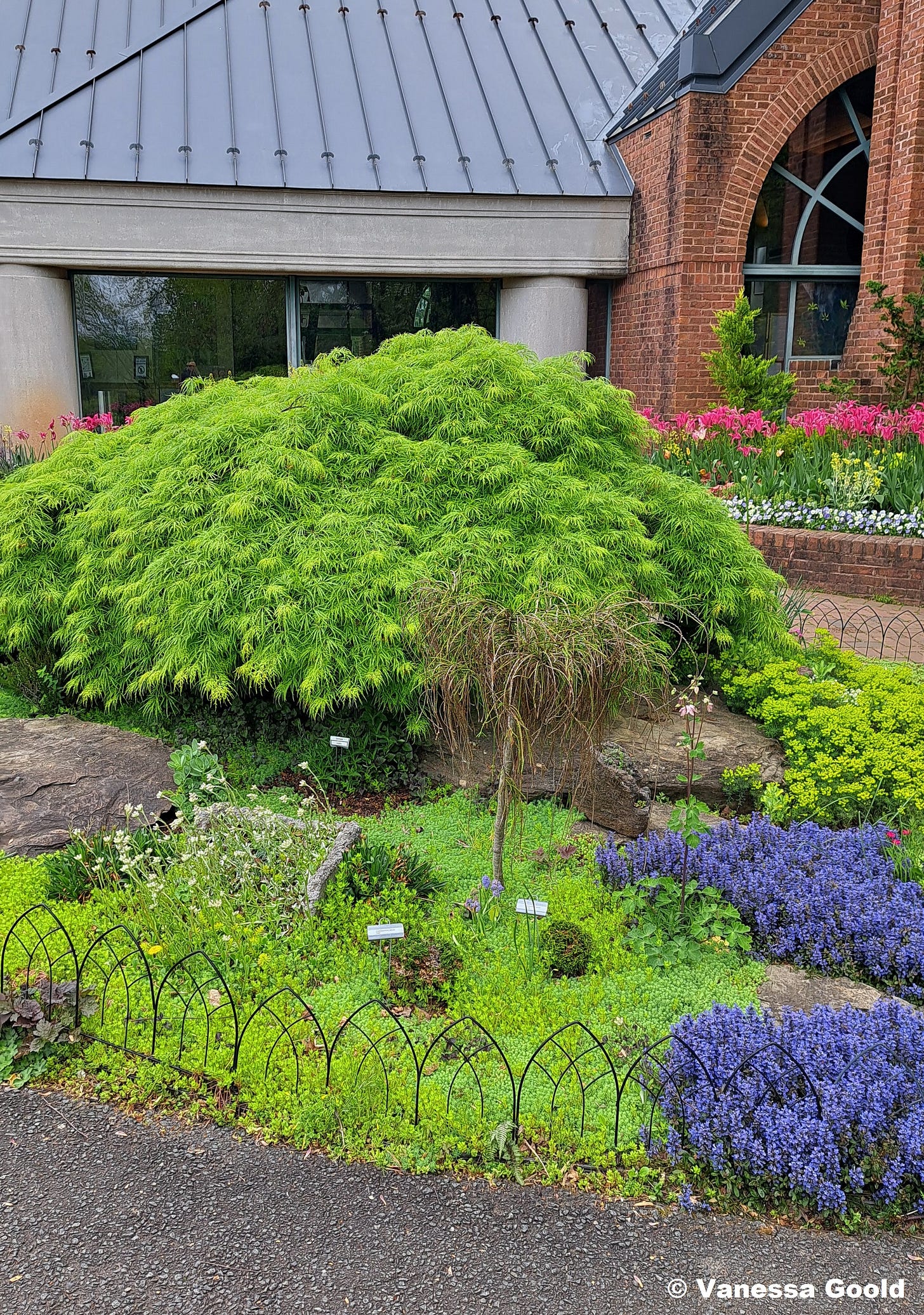
Now, most people are simply not trained horticulturists, and we have become accustomed to seeing office parks, shopping centers, neighborhood common areas, and subdivisions landscaped with swaths of mulch. So much so that it has become the norm. New developments build houses and plunk in a few “meatball” shrubs with lots of mulch in between, because frankly, mulch is cheaper than plants and doesn’t need to be kept alive or cared for. There isn’t a lot of design know-how required to arrange a few shrubs along a foundation.
We also have notions of “neatness” and order baked into how we view landscapes. I have touched on this topic before in my post, Design Like a Pro With Masses and Drifts. The normalization of closely clipped, “mown and blown” landscapes means that we all live with implicit and explicit expectations about the tidiness of our yards and gardens. Having a neat and clean landscape has come to symbolize prosperity and good neighborliness.
My own view is that things do not have to be black or white. I don’t believe that if a property is not manicured, it is necessarily messy. I also don’t believe that we need to abandon all of our aesthetic preferences or renounce order, symmetry, and harmony. There is a middle ground.
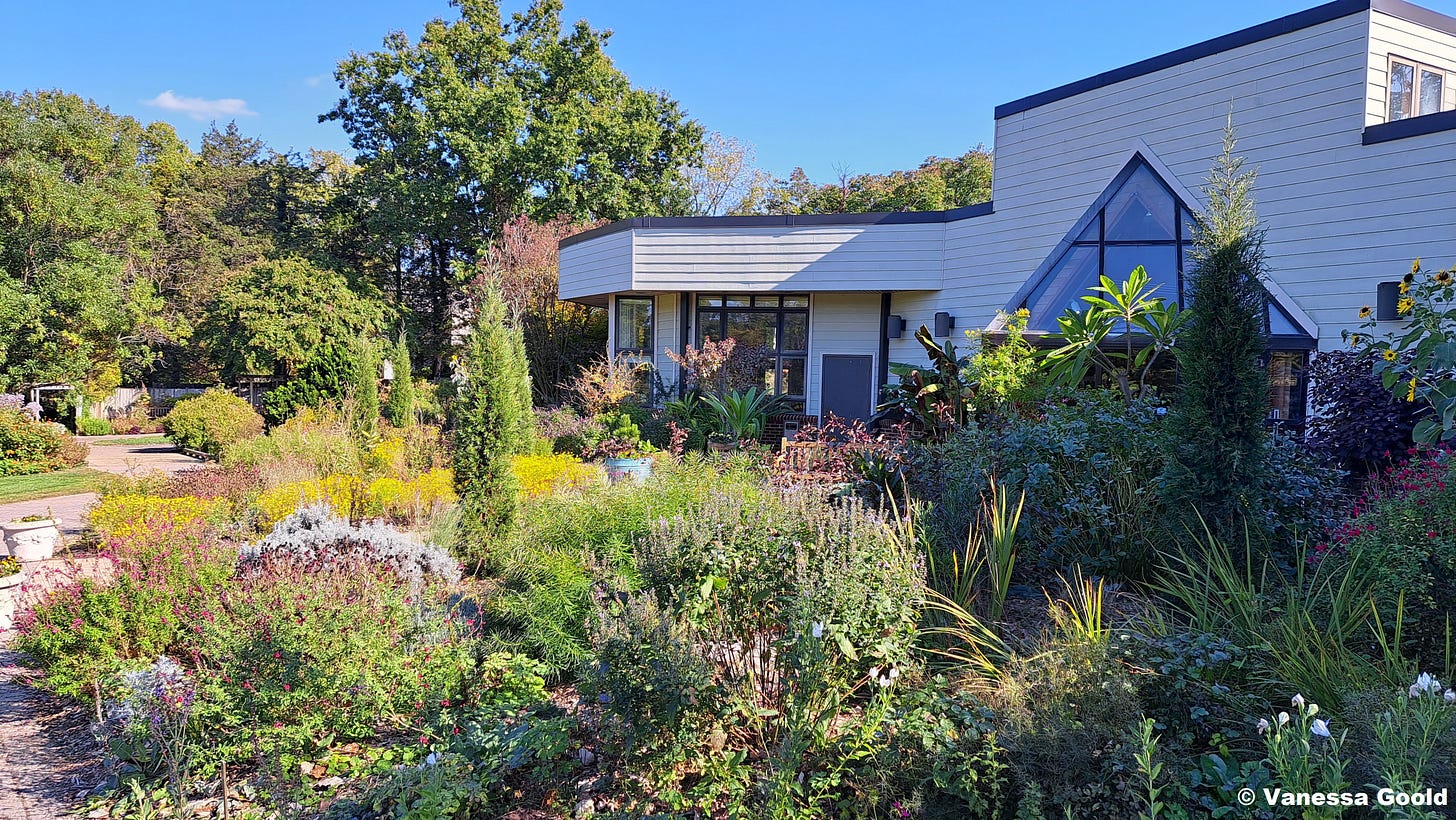
Now back to mulch. I have certainly relied on mulch a LOT in my own gardening at times. It has its place and purposes, so this is not a screed against mulch on principle. I’m simply arguing that there is life after mulch, and if we can get beyond our instinct to put down bags of shredded bark, we will evolve our gardening skills and provide greater benefit to wildlife at the same time. And when we do want to use mulch, we can be more thoughtful about mulching materials.
What do I mean when I say mulch?
Before I go much further, let me explain my use of the word mulch. So far, what I have been talking about is mass-produced shredded bark or hardwood mulch, the kind that comes in bags or even truckloads. Sometimes it is colored brown, red, or black. In fact, last week when I was at a home improvement store, there were no undyed options to be found. So this mulch is typically produced at enormous industrial facilities with the use of chemical dyes and then encased in plastic. Ultimately it breaks down and becomes part of the soil, which is one reason why you have to reapply it every year or every few years.
But the term mulch in general can also be used to describe other carbon-rich materials that are spread atop the surface of the soil. For example, wood chips, shredded/whole leaves, straw, pine needles/pine straw, grass clippings, and compost can all be used as mulch.
But wait - wasn’t I just telling you recently to make use of mulch?
Mulch is not bad. In fact, it’s extremely beneficial when employed wisely. Mulch can help support a healthy and resilient garden. Its benefits include weed suppression, moisture retention, erosion prevention, and soil temperature regulation. Natural mulches eventually add to soil health as they break down biologically. Aesthetically, it also provides cues of care to distinguish intentionally planted areas, to provide visual demarcations, to unify a planted area and to display a consistent looking background.
Groundcovers as mulch alternatives
Groundcover plants are low-growing, often readily spreading species that do just what their name says: they cover the ground. Much like a mulch. In fact, you may have heard the term “living mulch,” which sometimes refers to temporary crops that get incorporated into the soil, but can also signify perennial groundcovers.
Groundcovers function similarly to manufactured mulch in that they also suppress weeds, anchor the soil, retain moisture, and contribute to soil health. However, they go several steps beyond bark mulch by adding visual interest, unifying garden design, acting as larval hosts to insects, and providing cover and habitat for wildlife.
Maintaining groundcovers requires a different strategy than simply carting in and spreading loads of mulch every spring or fall. There is always some weeding still involved (this is true even with the use of bark mulch!), and you may need to make edits, trim things back, fill in with extra plants, or move things around. Working with groundcovers requires a little bit more expertise, but it is not necessarily any more work.
Groundcover vs. matrix: what’s the difference?
In ecological gardening that uses layered matrix planting techniques, we talk about matrix plants. Those are the plants that form the “background” of a garden area, a consistent species that ties the design together. Often (but not always), the matrix plant or plants are groundcover species. So in some cases the two terms may be considered synonymous.
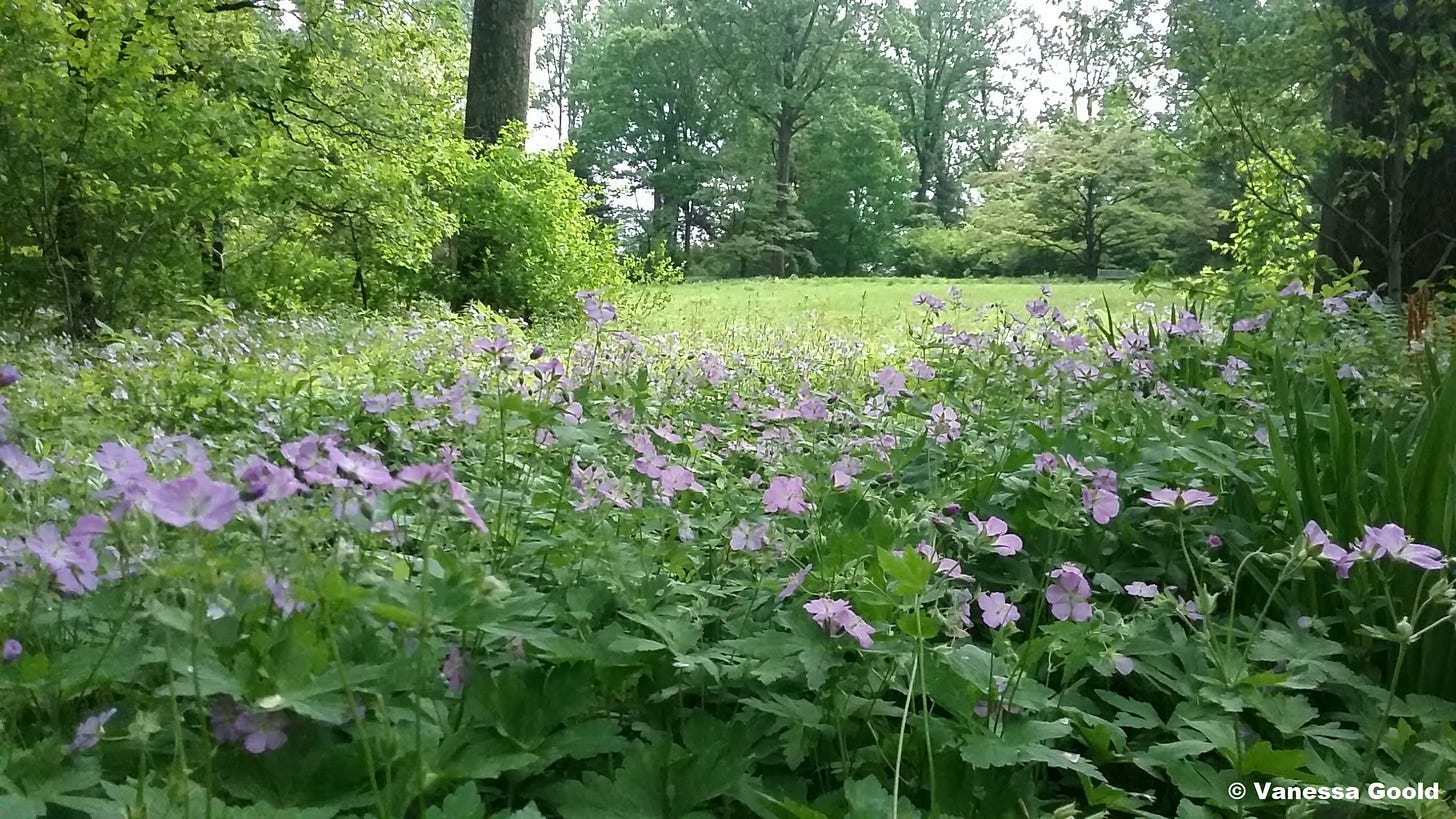
You don’t need to design a matrix planting to use groundcovers, however. Groundcovers can be used simply to cover an area of open ground in a mat.
Anywhere that you are currently employing bark mulch, you can substitute closely spaced groundcover species that will do the same job, only with photosynthesis!
Groundcover characteristics
Plants used as groundcovers can have different reproductive strategies. Some are clumpers while others are spreaders. Picture a clump of sedge (Carex spp.) that forms a neat little well-contained shape that looks like a circle from above. Then consider wild strawberry (Fragaria virginiana), a spreading plant that expands in all directions via runners.
Some spreading species can be quite aggressive. As long as you are prepared in advance and know what to expect, this is a wonderful characteristic! Remember, the plant is doing its job as a groundcover. If it is spreading quickly, you know you picked a suitable plant for the site (right plant, right place). While you may need to control the spread in some cases, doesn’t it beat buying and hauling and spreading mulch?
If you use clumping species as groundcovers, you’ll need to plant them close enough together so that when mature, they touch each other. The clumps may also expand so that you can divide and spread them out, or the species might readily reseed itself in gaps. During garden establishment, however, try to plant quite closely (could be 6-12 inches apart, depending on the species).
Another element to keep in mind is the groundcover species’ preferred growing conditions. Some need full sun while others can tolerate shade. It’s worth noting that you can employ shade tolerant groundcovers even in a sunny bed if they are planted underneath larger plants that will create the shade they prefer.
Depending on the situation, you may wish to choose groundcover species that can handle a little bit of foot traffic, or even mowing. If you want a very uniform look, you might choose something that can tolerate clipping, such as certain sedges.
Finally, consider your groundcover’s annual life cycle. Is it deciduous or evergreen? How will that affect the look of your garden throughout the seasons? In a mixed planting, you may not need the groundcover to be evergreen because larger plants will provide winter interest and soil protection through the winter, but in another situation, having greenery on the ground can be very valuable.
Groundcover species to try
Choosing the right groundcover depends on several criteria:
use case - whether you are filling in an open area and want consistent cover vs. knitting together a larger planting;
site conditions - dry or moist, sunny or shady, sloped or flat area;
maybe it is a tough space and you just need a plant to spread and fill it; or
perhaps you are working on eradicating invasive species and need something to compete and grow quickly.
You can stick to tried and true groundcovers, for example:
Sedges (Carex spp.) like Pennsylvania sedge (C. pensylvanica), rosy sedge (C. rosea), or Applachian sedge (C. appalachica)
Grasses such as purple lovegrass (Eragrostis spectabilis), poverty oat grass (Danthonia spicata), or prairie dropseed (Sporobolus heterolepis)
Pussytoes (Antennaria spp.)
Moss phlox (Phlox subulata)
Golden ragwort (Packera aurea) or round-leaved ragwort (P. obovata)
Green-and-gold (Chrysogonum virginianum)
Allegheny spurge (Pachysandra procumbens)
Wild strawberry (Fragaria virginiana)
Foamflower (Tiarella cordifolia)
Yarrow (Achillia millefolium)
White wood aster (Eurybia divaricata) or blue wood aster (Symphyotrichum cordifolium)
Violets (Viola sororia)
Wild ginger (Asarum canadense)
Partridgeberry (Mitchella repens)
Wild stonecrop (Sedum ternatum)
Or branch out a little and try something slightly different:
Moss - mosses can make a delightful carpetlike groundcover in shady conditions with acidic soil.
Ferns - some ferns are spreaders and others are clumpers. For spreaders, try New York fern (Thelypteris noveboracensis), lady fern (Athyrium felix-femina), sensitive fern (Onoclea sensibilis), or ostrich fern (Matteuccia struthiopteris).
Prickly pear (Opuntia humifusa) - if you need to fill a sunny, dry spot that you never want to have to water, this can be a very interesting groundcover!
Low spreading shrubs - I have seen Virginia sweetspire (Itea virginica) used as a groundcover of sorts under a glade of trees to great effect. Low-bush blueberry (Vaccinium angustifolium), fragrant sumac (Rhus aromatica), sweetfern (Comptonia peregrina), and yellowroot (Xanthorhiza simplicissima) are other candidates.
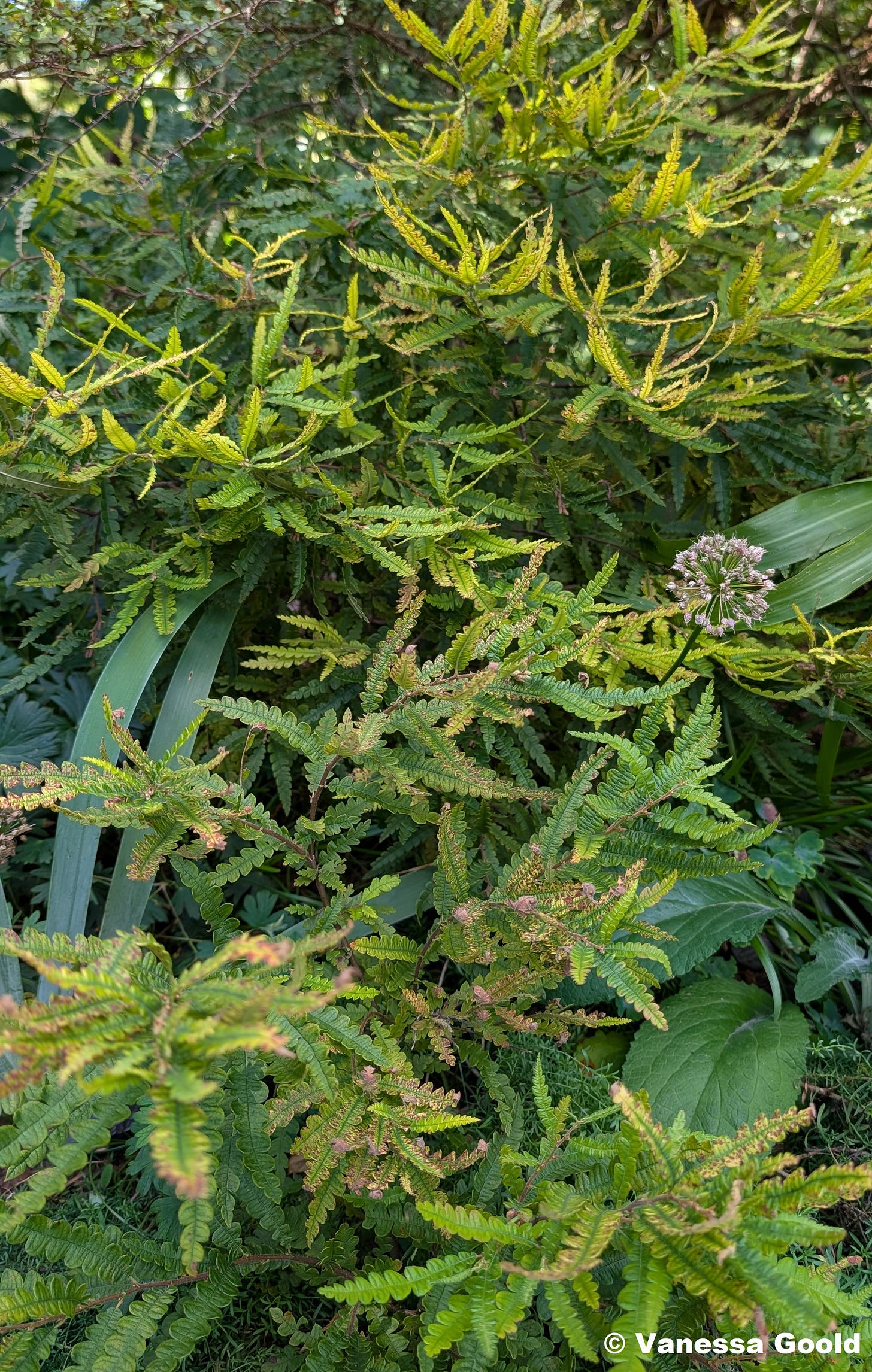
Filling the gaps
The purposes of groundcovers and mulch are similar in many ways. It’s important to note that even if you plant groundcovers and want to substitute them for mulch, you very well might still want to use mulch during establishment (it could take one to several years for your garden to completely fill in!). So I am not arguing against all mulch use. However, if you do employ mulch, consider the material. Could you switch out the bagged and dyed stuff for shredded leaves, pine needles, or other natural materials that you already have onsite? If you need to buy something in, could you purchase leaf mulch or compost?
What kinds of plants do you use as groundcovers? What have you found that works well? Do tell!


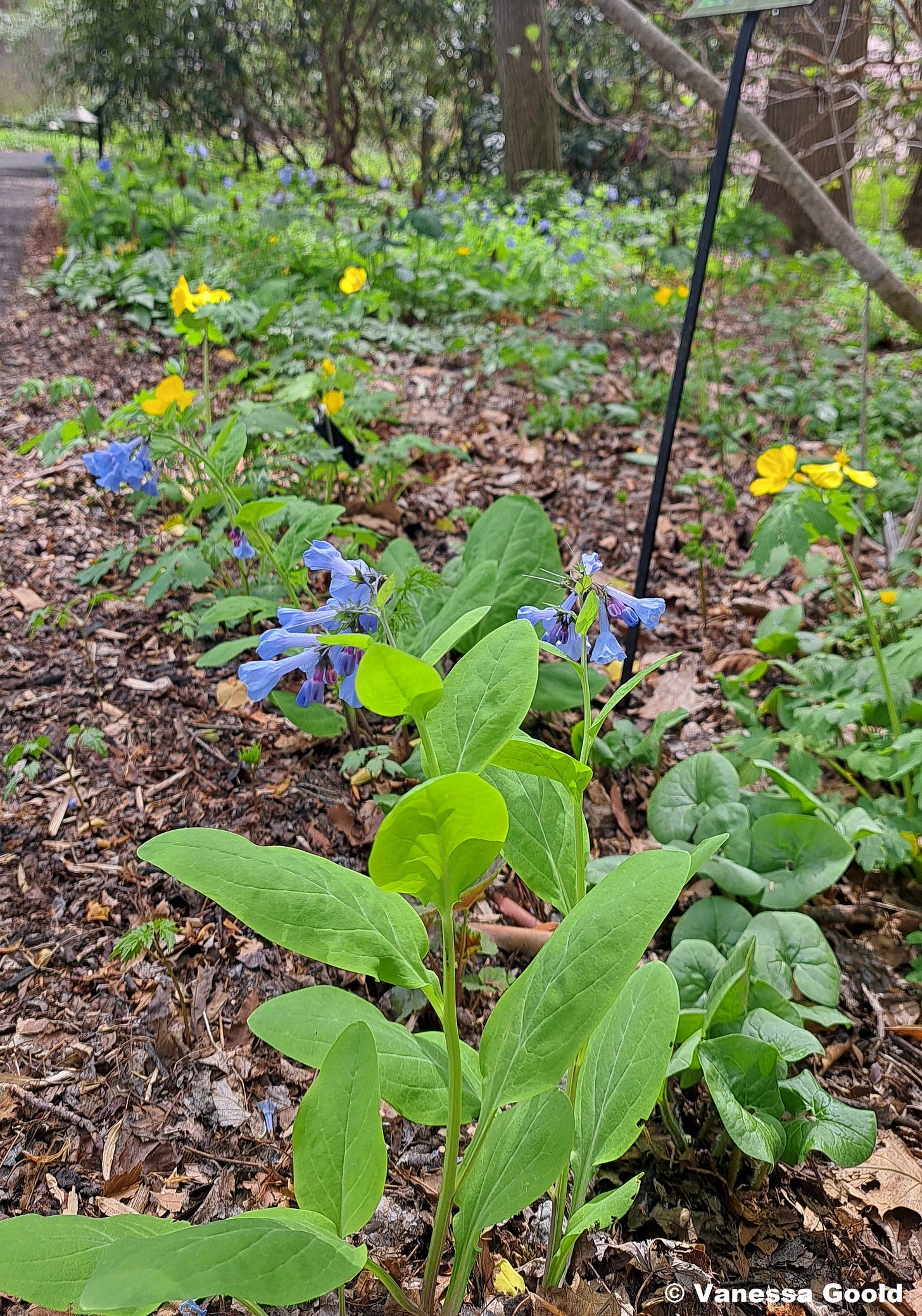
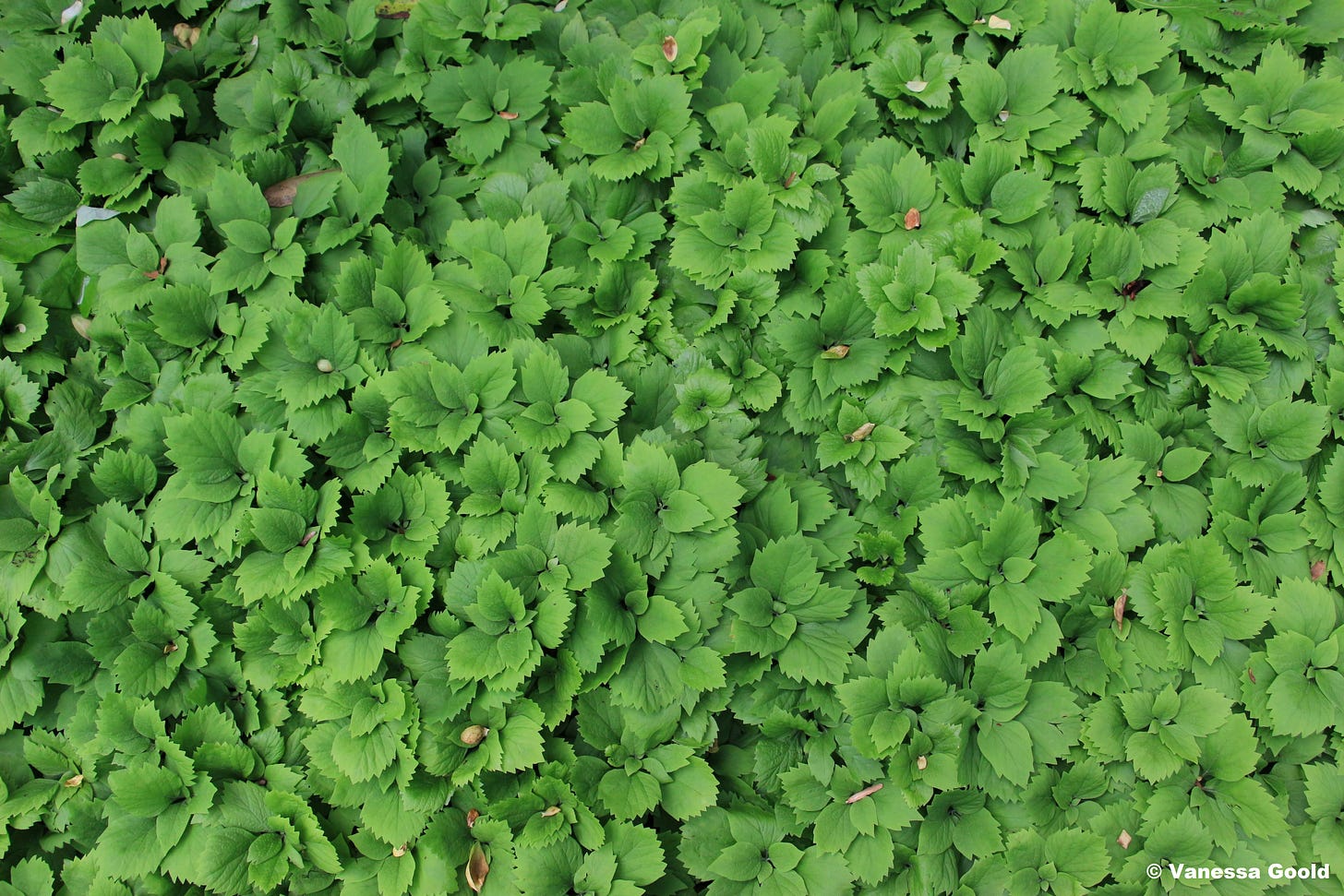
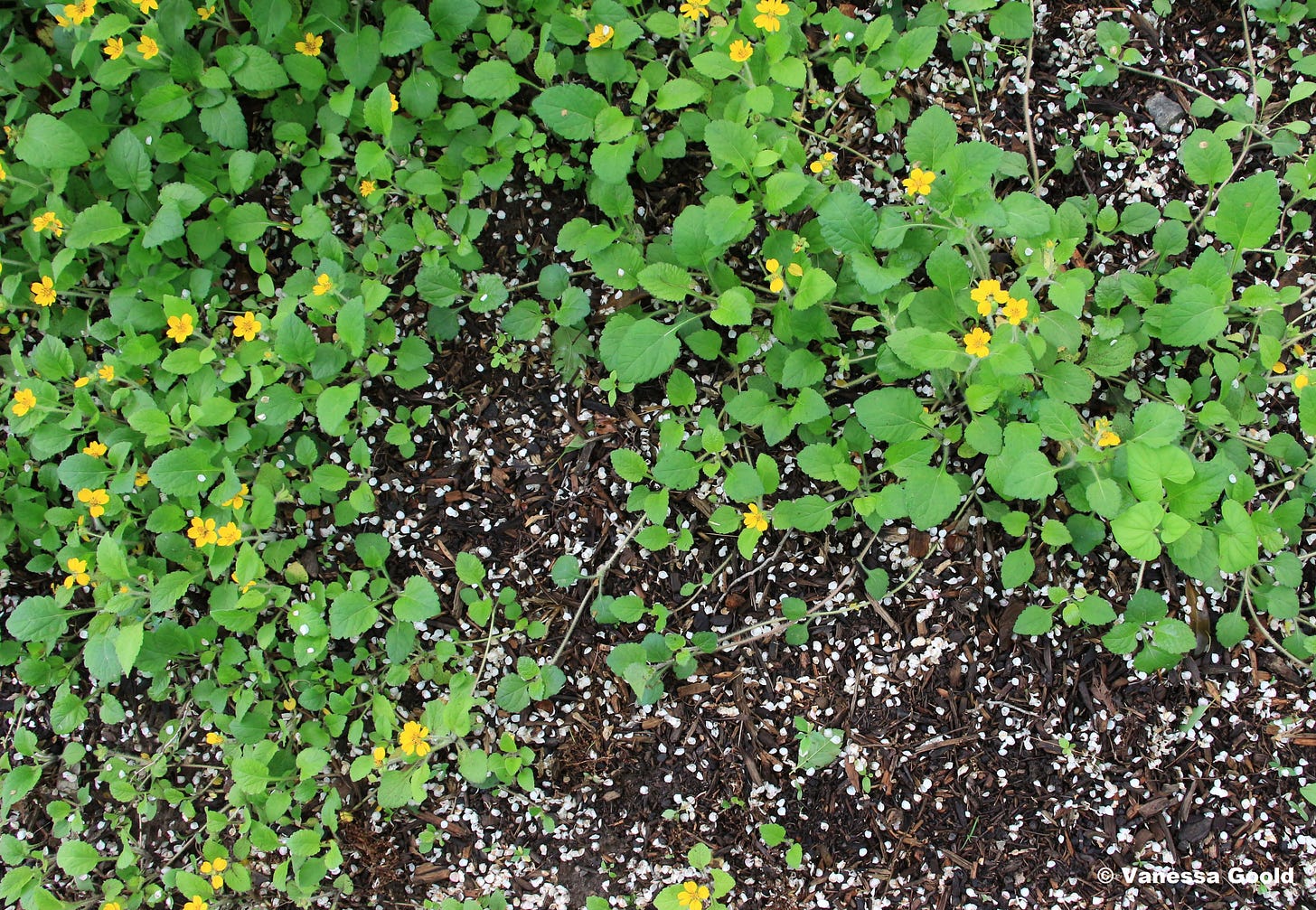
Such good information! Thanks for the great plant suggestions.
Wonderful information...so many options! Great ideas!